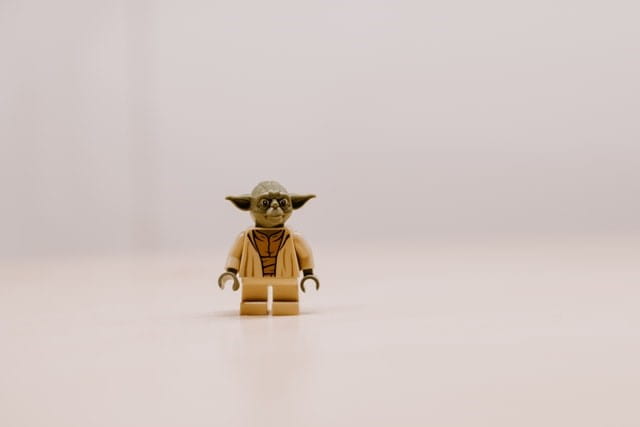Space Wars: Exclusion from Research
By Rory, on 13 July 2020
Rory from the UCL Centre for Co-production shares her thoughts about exclusion from research and chats to Sudhir Shah, a person with lived experience who has been involved in both co-production and patient public involvement in research work, and researcher from National Institute of Health Research (NIHR) Applied Research Collaboration (ARC) Northwest London, Meerat Kaur, about their ideas for action.
I’ve always loved Star Wars, to an embarrassing degree. It’s basically a series of classic Western movies but instead of cowboys you get people in funky costumes and a backdrop of infinitive darkness where the vastness of the Sierra Madre would be. And, of course, more spaceships and less horses. But what does this have to do with health research? Well, both are about a quest for new knowledge and in both cases deciding who comes along for the ride is mission critical. I like these wacky planet-hopping tales for the same reason I like my job: I like working with others and going somewhere uncharted.
However, unlike the cast of space operas, research staff still too rarely take the leap to go beyond their usual department, let alone beyond the “known universe” of academic connections. Unsurprisingly, new faces are rarely introduced. When the participants of the studies, those involved in patient public involvement or in co-producing, remain all too identical in terms of their background, some well-known phrases start popping up. The particularly offensive and untrue label of “hard-to-reach” often comes with the justification that there is mistrust towards the healthcare services and research professionals, implying a need for attitude change in communities and not for improved engagement skills among research staff. “Less often heard voices” is definitely more polite, but “ignored” would be shorter and more accurate. There is no need for complicated phrases and double hyphens, and no need to call the problem “distance” when its real name is exclusion.
Barriers are created by the use of language, methods, and spaces most convenient for academics, and by feeling content when that produces a low number of participants from BAME and vulnerable groups. As the Centre for Co-production, this is something we are working to change. Co-production has been gaining attention as a solution towards active involvement and equal power‐sharing, but there is still a long way to go. The diversity of those involved in our own recent virtual Co-production Network events has decreased since we moved from face-to-face. We are working to change this.

Going the distance – Stormtroopers have to cross many intergalactic deserts but research may not have to put in quite as much leg-work. The real challenge is not the distance, it’s the approach. (Photo by Daniel K Cheung)
What are the obstacles that we need to overcome?
It is no coincidence that those being most sought and required are often the least likely to respond to “in-house” research methods (written questionnaires, telephone consultations or one off group meetings). If we take the example of older people, having multiple health, mobility or vision difficulties is very likely, so individual face-to-face home interviews are preferred, unless focus groups are set up in familiar surroundings without the need to travel. To find out more, I asked one of our Centre co-producers Sudhir, a carer, a research co-producer, patient public involvement group member and also research participant himself, about practical barriers to inclusive research within his community.
“What I know is that some Asian carers and patients do not come forward to participate and those who have stated that their grandparents or parents feel isolated in dealing with their issues because they are controlled by their children. Even those who are in care homes rely on their children to translate and some of them may not be telling the whole truth. Some Asian families with multi-generational households, dependency on relatives, incidences of domestic abuse and language barriers face hurdles for service accessibility. For some, loyalty to family may mean they are reluctant to disclose issues or maybe family members are gate-keeping information and resources by translating for them. So what I am trying to say is that even those health professionals participating in co-production may not have the true picture of the older Asian patients’ feelings and issues.”
In addition to language barriers, the ignorance towards family and cultural values of BAME communities is still reported as a huge concern. Instead of glancing over this as inevitable, though unfortunate, let’s approach it as a direct consequence of a long-held convenience: insisting on jargon-heavy, academic English. Picking the language and tone of research is a great responsibility that can directly add to or challenge the existing inequalities in power and access. We reached out to Meerat to share the experiences of researchers who have worked with BAME communities to understand how we engage these communities can provide useful lessons to ensure we adopt effective approaches to work with these communities.
Prinjha et al’s (2020) research highlighted four important lessons to help us work with and engage people who are seldom heard. They speak of the significance of co-working with community partners, and knowing and having experience of the various languages and cultures of the people who are seldom heard. Many of these points were facilitated by South Asian researchers working with South Asian communities. The fact that these researchers came from some of the communities they were working with helped them be aware of how they were seen and positioned by these people from seldom heard communities. This familiarity also enabled them to sense who they were hearing from and whose experiences they may not be hearing.
Although both examples we’ve included here refer to Asian communities, we know that these obstacles and lessons are applicable in different ways across some other BAME communities. As such, we are planning a part 2 for this blog where we will be focusing specifically on the lack of Black voices in research, exploring why this is and what we can do about it. None of this is to say that anyone should “feel bad” or start apologising. Shame has no place in the equality dialog. There’s absolutely no point in feeling shame when we discover our shortcomings says Dr Ibram X. Kendi explaining how racism and exclusion hurts all of us. The point is that many of us have a choice to let the exclusion go on and accept it as a norm. Which is why the initiative to overcome barriers has to come from those enjoying the comforts of the current system, not from those who are very rarely invited to contribute. Whether in a senior or junior positions, responsibilities have to be acknowledged and steps taken towards inclusive research designs. But how?
Some steps forward
Having our goofy space explorers in mind, their adventures are usually riddled with mistakes and misunderstandings. And yet, the characters are endearing, but not because they are politically correct or even particularly compassionate. In fact, most of the time they are wrong, and the crucial moment comes when they admit this openly. They started the journey because they were curious, but to find anything valuable they had to learn to share power and responsibility as a collective. The moral of all ten Star Wars movies and several hundred Star Trek episodes is that the solution is outside of you and beyond your home turf. Not that Hans Solo was particularly fond of socialising, but he made sure to set up shop in local hubs to get the connections he needed. Savvy research design should prioritise approaching existing groups and networks that attract regular participation from the specific group that will need the end product of the research the most. Inevitably, new insights will likely come from communities whose language is totally different to yours, but if you work together as ‘one team’ and put in place the relevant support for everyone, you can learn to understand. Nothing remotely interesting would happen in these stories if the team was made up of six identical white middle-aged men and one white middle-aged woman, looking out their offices and occasionally throwing out pamphlets that read “Talk to us!”.
Sending out calls for communities to come to the researcher’s base and asking them to describe things in academic terms is not collaboration. Being surprised that the same crowd shows up and blaming the absent for being tricky to track down is similarly unhelpful. But, by taking a leaf from Hans Solo’s book, a new option appears, outlining action that everyone can take:
- Recruit a team from across the universe (mixed group of people with lived experience, carers, students, patients, healthcare practitioners, and researchers of various disciplines or lobby for these people to be part of your group
- Navigate with local guidance (talk to organisations already working with these groups and go to them, don’t expect them to come to you)
- Establish strong alliances along the way and be sure to keep those relationships going (invest time and resources into building trust, maintaining connections and developing opportunities)
- Keep exploring new spaces that are not at all far, far away
Interested in co-production? We would love to have you join us as we take on the task of developing the UCL Centre for Co-production. The Centre is due to officially launch in Oct 2020 but before that happens we are working to co-produce all elements of that set up, and ensuring that diverse groups of people continue to be involved is a key part of this work. Please drop Rory an email at coproduction@ucl.ac.uk if you would like to get involved.

Training to do better is a choice – As Yoda said: If you end your training now, if you choose the quick and easy path as Vader did, you will become an agent of evil. (Photo by Kelly Sikkema)
 Close
Close


